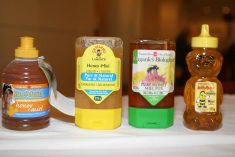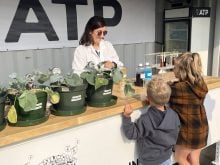Eliminating castration would be a change for the North American hog industry, but it doesn’t have to be a disaster.
Intact males have greater feed efficiency, nitrogen retention and lean gain, making them as much as 36 percent better in gross margin, James Squires of the University of Guelph told the recent Manitoba Swine Seminar.
However, he said researchers must first eliminate the problem of “boar taint,” which has scared the industry away from intact males. Boar taint causes meat to taste unpleasant.
Read Also

First annual Ag in Motion Junior Cattle Show kicks off with a bang
Ag in Motion 2025 had its first annual junior cattle show on July 15. The show hosted more than 20…
“There is no one solution,” said Squires.
Possible solutions, when used in combination, include chemical castration, genetic selection and nutritional additives that bind the two taint-causing compounds: androstenone and skatole.
“I think it will certainly address a crucial problem,” said Squires.
British pig producers are already forced to leave males intact and have coped by slaughtering pigs earlier so they don’t grow to the age at which androstenone levels become a problem.
However, this is not economical.
Research has shown that dietary supplements such as activated carbon can bind androstenone and eliminate much of it.
Immunocastration is another promising approach. It is a vaccine-style delivery of a substance that retards the development of the testicles in young males and cuts the production of androstenone and sex steroids.
A Pfizer immunocastration vaccine, Improvest or Improvac, has been shown to allow intact males to develop to slaughter weight with low production of the boar taint compounds.
Genetic selection also has potential. Squires said lines and individuals within various breeds have far lower levels of boar taint than others, but previous attempts to selectively breed for low boar taint have not had great results.
However, researchers are developing genetic markers that appear to reveal the potential of boar taint.
“Eliminating the need for castration of male piglets will improve pork quality and consistency, profitability, environmental impact and animal welfare of pork production,” said Squires.
It would result in a $5 per pig advantage in production costs and produce hogs that shed less nitrogen and phosphorus .

















